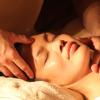BACKGROUND:Acupuncture has a history of traditional use in China for women's health conditions including premenstrual syndrome (PMS), but its effectiveness for this condition remains unclear. This review examined the available evidence supporting the use of acupuncture or acupressure to treat PMS.
OBJECTIVES:To evaluate the effectiveness and safety of acupuncture or acupressure for women with PMS or premenstrual dysphoric disorder (PMDD).
SEARCH METHODS:We searched the Cochrane Gynaecology and Fertility Specialised Register, Cochrane Central Register of Studies Online (CENTRAL CRSO), MEDLINE, Embase, AMED, PsycINFO, CINAHL (from inception to 21 September 2017), two clinical trial databases (from their inception to 21 September 2017), and four electronic databases in China (from their inception to 15 October 2017): Chinese Biomedical Literature database (CBM), China National Knowledge Infrastructure (CNKI), VIP information/ Chinese Scientific Journals database and WANFANG. Reference lists from included articles were handsearched.
SELECTION CRITERIA:We included studies if they randomised women with PMS and associated disorders (PMDD and late luteal phase dysphoric disorder/LPDD) to receive acupuncture or acupressure versus sham, usual care/waiting-list control or pharmaceutical interventions mentioned by the International Society for Premenstrual Disorders (ISPMD). If acupuncture or acupressure were combined with another therapy, these studies were also included where the additional therapy was the same in both groups. Cross-over studies were eligible for inclusion, but only data from the first phase could be used.
DATA COLLECTION AND ANALYSIS:Two review authors independently selected the studies, assessed eligible studies for risk of bias, and extracted data from each study. Study authors were contacted for missing information. The quality of the evidence was assessed using GRADE. Our primary outcomes were overall premenstrual symptoms and adverse events. Secondary outcomes included specific PMS symptoms, response rate and quality of life.
MAIN RESULTS:Five trials (277 women) were included in this review. No trials compared acupuncture or acupressure versus other active treatments. The number of treatment sessions ranged from seven to 28. The quality of the evidence ranged from low to very low quality, the main limitations being imprecision due to small sample sizes and risk of bias related to detection bias and selective reporting.Acupuncture versus sham acupunctureAcupuncture may provide a greater reduction in mood-related PMS symptoms (mean difference (MD) -9.03, 95% confidence interval (CI) -10.71 to -7.35, one randomised controlled trial (RCT), n = 67, low-quality evidence) and in physical PMS symptoms (MD -9.11, 95% CI -10.82 to -7.40, one RCT, n = 67, low-quality evidence) than sham acupuncture, as measured by the Daily Record of Severity of Problems scale (DRSP). The evidence suggests that if women have a mood score of 51.91 points with sham acupuncture, their score with acupuncture would be between 10.71 and 7.35 points lower and if women have a physical score of 46.11 points, their score with acupuncture would be between 10.82 and 7.4 points lower.There was insufficient evidence to determine whether there was any difference between the groups in the rate of adverse events (risk ratio (RR) 1.74, 95% CI 0.39 to 7.76, three RCTs, n = 167, I= 0%, very low-quality evidence).Specific PMS symptoms were not reportedThere may be little or no difference between the groups in response rates. Use of a fixed-effect model suggested a higher response rate in the acupuncture group than in the sham group (RR 2.59, 95% CI 1.71 to 3.92; participants = 100; studies = 2; I= 82%), but owing to the high heterogeneity we tested the effect of using a random-effects model, which provided no clear evidence of benefit for acupuncture (RR 4.22, 95% CI 0.45 to 39.88, two RCTs, n = 100, I= 82%, very low-quality evidence).Acupuncture may improve quality of life (measured by the WHOQOL-BREF) compared to sham (MD 2.85, 95% CI 1.47 to 4.23, one RCT, n = 67, low-quality evidence).Acupuncture versus no treatmentDue to the very low quality of the evidence, we are uncertain whether acupuncture reduces PMS symptoms compared to a no treatment control (MD -13.60, 95% CI -15.70 to -11.50, one RCT, n = 14).No adverse events were reported in either group.No data were available on specific PMS symptoms, response rate or quality of life outcomes.Acupressure versus sham acupressureWe found low-quality evidence that acupressure may reduce the number of women with moderate to severe PMS symptoms at the end of the trial compared to sham acupressure (RR 0.64 95% CI 0.52 to 0.79, one RCT, n = 90, low-quality evidence). The evidence suggests that if 97 women out of 100 in the sham acupressure group had moderate to severe PMS symptoms, the number of women in the acupressure group with moderate to severe symptoms would be 50 to 76 women.Acupressure may improve both physical (MD 24.3, 95% CI 17.18 to 31.42, one RCT, n = 90, low-quality evidence) and mental (MD 17.17, 95% CI 13.08 to 21.26, one RCT, n = 90, low-quality evidence) quality of life.No data were available on adverse events, specific symptoms or response rates.
AUTHORS' CONCLUSIONS:The limited evidence available suggests that acupuncture and acupressure may improve both physical and psychological symptoms of PMS when compared to a sham control. There was insufficient evidence to determine whether there was a difference between the groups in rates of adverse events.There is no evidence comparing acupuncture or acupressure versus current ISPMD recommended treatments for PMS such as selective serotonin reuptake inhibitors (SSRIs). Further research is required, using validated outcome measures for PMS, adequate blinding and suitable comparator groups reflecting current best practice.
 Acupressure is an ancient healing art using the fingers to gradually press key healing points, which stimulate the body's natural self-curative abilities. Acupressure releases tension, increases circulation, reduces pain and develops health.
Acupressure is an ancient healing art using the fingers to gradually press key healing points, which stimulate the body's natural self-curative abilities. Acupressure releases tension, increases circulation, reduces pain and develops health.